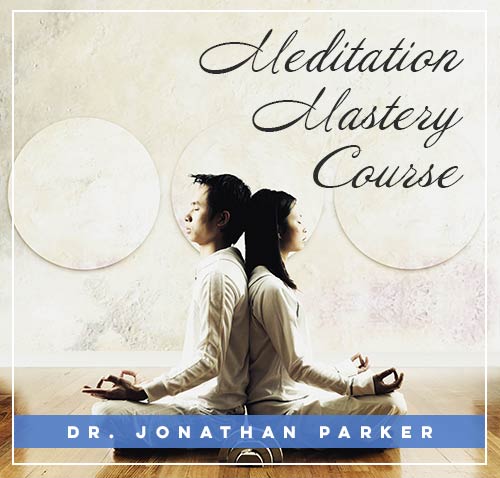Mastering the Art of Meditation

Before diving in, please note: This post is for informational purposes only. If you’d like to know more about how we approach topics, feel free to check out our friendly Disclaimer Page.
Hey there, amazing readers! 🖐️ Just a quick note: yes, we know there are a lot of ads here. Trust us, we get it—it’s not the prettiest look, but they help us keep this blog alive and kicking. Those pesky little ads cover the costs of all the behind-the-scenes magic, from hosting and tech stuff to creating content we hope you’ll love.
We’re committed to delivering quality posts, and your support (even just sticking around despite the ads) means everything to us. So, bear with us, and thanks for helping us keep the good vibes rolling. Now, on to the fun stuff! 😉
TRANSLATE BUTTON AT THE END OF THE ARTICLE
A Quick Overview
Meditation is a practice that has been around for centuries and is known for its numerous physical, mental, and emotional benefits.
Mastering the art of meditation can be a transformative journey that allows individuals to cultivate inner peace, mindfulness, and clarity of mind.
By understanding the basics of meditation, setting the right environment, exploring different techniques, and overcoming common challenges, one can establish a consistent meditation practice and deepen their experience over time.
This article aims to provide a comprehensive guide on how to master the art of meditation.
Understanding the Basics of Meditation
Focus and Awareness: Meditation involves training the mind to focus and be present in the moment.
It is about cultivating a sense of awareness of your thoughts, emotions, and sensations without judgment.
Posture: Finding a comfortable and stable posture is essential for meditation.
Whether sitting cross-legged on the floor, using a cushion, or sitting on a chair, the key is to have a straight spine and relaxed shoulders.
Breath: Paying attention to the breath is a common anchor in meditation.
Focusing on the inhale and exhale can help calm the mind and bring a sense of relaxation.
Mindfulness: Mindfulness is a key component of meditation.
It involves being fully present in the moment and observing thoughts and sensations without getting caught up in them.
Intentions: Setting intentions for your meditation practice can help guide your focus and bring clarity to your goals.
Whether it’s to reduce stress, improve focus, or cultivate compassion, having a clear intention can enhance your meditation experience.
Setting the Right Environment for Meditation
Quiet Space: Find a quiet space where you won’t be disturbed during your meditation practice.
This could be a designated room, corner of a room, or even outdoors in nature.
Comfortable Seating: Choose a comfortable seat that allows you to sit with a straight spine and relaxed posture.
This could be a cushion, meditation bench, or chair.
Lighting: Dimming the lights or using candles can create a calming atmosphere for meditation.
Natural light from a window can also be soothing.
Minimal Distractions: Turn off electronic devices, close doors, and let others in your household know not to interrupt you during your meditation practice.
Scent: Using essential oils, incense, or candles with calming scents like lavender or sandalwood can enhance the ambiance of your meditation space.
Different Meditation Techniques to Explore
Mindfulness Meditation: Focus on being present in the moment and observing thoughts, emotions, and sensations without judgment.
Guided Meditation: Follow along with a recorded meditation that guides you through visualizations, body scans, or relaxation techniques.
Mantra Meditation: Repeat a word, phrase, or sound (mantra) silently or aloud to help focus the mind and cultivate inner peace.
Breath Awareness Meditation: Focus on the natural rhythm of your breath, observing the inhalation and exhalation without trying to control it.
Walking Meditation: Practice meditation while walking slowly and mindfully, paying attention to each step and the sensations in your body.
Overcoming Common Challenges in Meditation
Restlessness: If you find your mind wandering or feeling restless during meditation, gently bring your focus back to your breath or chosen anchor.
Impatience: It’s common to feel impatient or frustrated when starting a meditation practice.
Remember that meditation is a skill that takes time to develop, and progress comes with consistent practice.
Physical Discomfort: If you experience discomfort in your body while meditating, adjust your posture or try a different seated position to find comfort.
Lack of Time: Even a few minutes of meditation can be beneficial.
Set aside a specific time each day for your practice, whether it’s in the morning, during lunch break, or before bed.
Expectations: Let go of any expectations or judgments about your meditation practice.
Approach it with an open mind and a sense of curiosity.
Cultivating a Consistent Meditation Practice
Set a Routine: Establish a regular meditation routine by choosing a specific time and place for your practice each day.
Start Small: Begin with short meditation sessions, such as 5-10 minutes, and gradually increase the duration as you build your practice.
Accountability: Join a meditation group, find a meditation buddy, or use a meditation app to help hold yourself accountable for your practice.
Mindful Activities: Incorporate mindfulness into your daily activities, such as mindful eating, walking, or breathing exercises, to reinforce your meditation practice.
Celebrate Progress: Acknowledge your efforts and progress in your meditation practice, whether it’s increased focus, reduced stress, or improved clarity of mind.
Deepening Your Meditation Experience
Exploring Advanced Techniques: Once you have established a foundation in meditation, explore advanced techniques such as loving-kindness meditation, body scan meditation, or transcendental meditation.
Silent Retreats: Consider attending a silent meditation retreat to deepen your practice and immerse yourself in a supportive environment with experienced teachers.
Journaling: Reflect on your meditation experiences by keeping a meditation journal to track your progress, insights, and challenges.
Mindfulness Retreats: Attend mindfulness retreats or workshops to deepen your understanding of mindfulness practices and connect with like-minded individuals.
Personal Reflection: Take time to reflect on how meditation has impacted your life, relationships, and overall well-being.
Notice any changes in your thoughts, emotions, and behaviors.
Incorporating Mindfulness into Meditation
Daily Mindfulness Practices: Integrate mindfulness into your daily routine by bringing awareness to everyday activities such as eating, walking, or driving.
Body Awareness: Bring attention to the sensations in your body during meditation, noticing areas of tension, relaxation, or discomfort.
Emotional Awareness: Observe your emotions without judgment during meditation, noticing how they come and go like passing clouds in the sky.
Compassion Practice: Cultivate compassion for yourself and others during meditation by sending loving-kindness, well wishes, and positive energy.
Non-judgmental Awareness: Practice being non-judgmental towards your thoughts, emotions, and experiences during meditation, allowing them to arise and pass without attachment.
Utilizing Breathing Techniques in Meditation
Deep Breathing: Practice deep breathing techniques such as diaphragmatic breathing or belly breathing to calm the nervous system and reduce stress during meditation.
Counting Breath: Count each inhalation and exhalation during meditation to maintain focus and concentration on the breath.
Alternate Nostril Breathing: Practice alternate nostril breathing to balance the left and right hemispheres of the brain and promote relaxation and clarity of mind.
Box Breathing: Inhale, hold, exhale, hold – practice box breathing to regulate the breath and calm the mind during meditation.
Breath Awareness: Simply observe the natural rhythm of your breath without trying to control it, allowing it to flow in and out naturally as you focus on the present moment.
Enhancing Focus and Concentration through Meditation
Single-pointed Focus: Choose a single point of focus, such as the breath, a mantra, or a visual object, to anchor your attention during meditation.
Mindfulness of Body: Bring awareness to different parts of your body during meditation, scanning from head to toe and noticing sensations, tension, or relaxation.
Sound Awareness: Focus on the sounds around you during meditation, whether it’s the chirping of birds, rustling of leaves, or distant traffic noise.
Visualizations: Use guided visualizations or mental imagery during meditation to enhance focus, relaxation, and clarity of mind.
Open Awareness: Practice open awareness meditation by observing thoughts, emotions, and sensations as they arise without getting caught up in them, allowing them to pass like clouds in the sky.
Exploring the Benefits of Regular Meditation
Stress Reduction: Meditation has been shown to reduce stress, anxiety, and cortisol levels in the body, promoting a sense of relaxation and well-being.
Improved Focus: Regular meditation practice can enhance focus, concentration, and cognitive function by training the mind to be present and attentive.
Emotional Regulation: Meditation can help improve emotional regulation by increasing awareness of emotions, reducing reactivity, and promoting a sense of calm.
Better Sleep: Practicing meditation before bed can improve sleep quality, reduce insomnia, and promote relaxation for a restful night’s sleep.
Mind-Body Connection: Meditation can strengthen the mind-body connection by bringing awareness to physical sensations, emotions, and thoughts, promoting holistic well-being.
Creating a Personalized Meditation Routine
Identify Goals: Determine your intentions and goals for meditation, whether it’s to reduce stress, improve focus, cultivate compassion, or enhance well-being.
Choose Techniques: Select meditation techniques that resonate with you, whether it’s mindfulness meditation, mantra meditation, breath awareness, or guided meditation.
Set a Schedule: Establish a consistent meditation schedule that works for you, whether it’s in the morning, at lunchtime, in the evening, or before bed.
Adapt to Needs: Be flexible with your meditation routine and adapt it to your needs, preferences, and lifestyle to ensure sustainability and enjoyment.
Reflect and Adjust: Reflect on your meditation practice regularly, noting any changes, challenges, or insights, and make adjustments as needed to enhance your experience.
Seeking Guidance from Meditation Experts
Mentorship: Find a meditation teacher, mentor, or guide who can offer support, guidance, and feedback on your meditation practice.
Workshops and Retreats: Attend meditation workshops, classes, or retreats led by experienced teachers to deepen your practice and connect with a community of meditators.
Online Resources: Explore online meditation resources, courses, and communities to access guided meditations, instructional videos, and support for your practice.
Local Meditation Groups: Join local meditation groups, centers, or communities to practice with others, share experiences, and learn from fellow meditators.
Books and Literature: Dive into meditation literature, books, and research to deepen your understanding of meditation techniques, history, benefits, and best practices.
Conclusion
Mastering the art of meditation is a transformative journey that requires dedication, practice, and patience.
By understanding the basics of meditation, setting the right environment, exploring different techniques, and overcoming common challenges, individuals can cultivate a consistent meditation practice and deepen their experience over time.
Incorporating mindfulness, breathing techniques, and focus exercises can enhance the quality of meditation sessions and promote relaxation, clarity of mind, and well-being.
By exploring the benefits of regular meditation, creating a personalized meditation routine, and seeking guidance from meditation experts, individuals can embark on a fulfilling and enriching meditation practice that brings peace, presence, and mindfulness into their lives.

The Enlightenment Journey is a remarkable collection of writings authored by a distinguished group of experts in the fields of spirituality, new age, and esoteric knowledge.
This anthology features a diverse assembly of well-experienced authors who bring their profound insights and credible perspectives to the forefront.
Each contributor possesses a wealth of knowledge and wisdom, making them authorities in their respective domains.
Together, they offer readers a transformative journey into the realms of spiritual growth, self-discovery, and esoteric enlightenment.
The Enlightenment Journey is a testament to the collective expertise of these luminaries, providing readers with a rich tapestry of ideas and information to illuminate their spiritual path.
Our Diverse Expertise 🌟
While our primary focus is on spirituality and esotericism, we are equally passionate about exploring a wide range of other topics and niches 🌍📚. Our experienced team is dedicated to delivering high-quality, informative content across various subjects ✨.
To ensure we provide the most accurate and valuable insights, we collaborate with trusted experts in their respective domains 🧑🏫👩🏫. This allows us to offer well-rounded perspectives and knowledge to our readers.
Our blog originally focused on spirituality and metaphysics, but we’ve since expanded to cover a wide range of niches. Don’t worry—we continue to publish a lot of articles on spirituality! Frequently visit our blog to explore our diverse content and stay tuned for more insightful reads.






